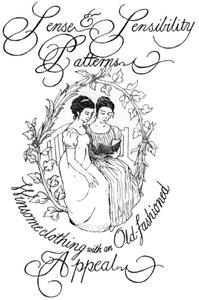Make an Apron-Front Regency Gown! (Part Two)
After finishing the bodice base, it was time to make the sleeves. Because this material is so thin and delicate, I chose to make full long sleeves with short oversleeves instead of using removable under sleeves. The fantastic border of this beautiful sari fabric provided me with an instant border for the long sleeve hems and the sleeve bands of the short sleeves.
Make an Apron-Front Regency Gown! (Part One)
I decided last August to make a new apron-front gown, basing it upon several gowns I've handled in person, plus an extant garment in the National Museum of Australia that I found online with detailed photographs.This time, I've used my Elegant Lady's Closet pattern as the base, since it has no back opening to begin with and features the more fitted long sleeves I planned to use for my undersleeves and the short, puffed ballgown sleeves I'd use as the over sleeves.
1940s Day Dress Pattern with Yoke
This WW2-era Simplicity pattern features a smart day dress style. Note the top-stitched shoulder yoke--a common style in this period.
1917 Day Dress
A cute 1917 day dress from a winter catalogue. Peplums and overskirts were very popular from 1915-1917, creating a more hourglass figure than the columnar styles of 1910-1914. Note the interesting top-curl hairstyle on the model.
Reproduction Civil War Day Dress
Here I am in my custom Civil War day dress by Mrs. Martin's Mercantile (unfortunately, Mrs. Martin has now retired). The skirt and bodice are made of 1860s reproduction fabric with a tiny black pattern on brown. Pagoda sleeves are trimmed with black cotton and piping, and the hemline of the skirt is trimmed all 'round with black cotton.





